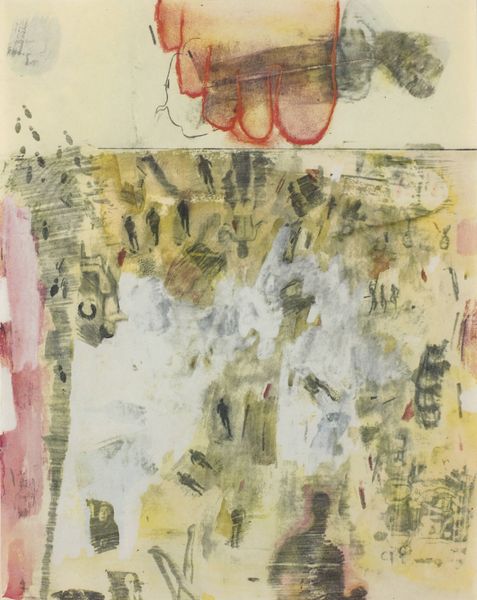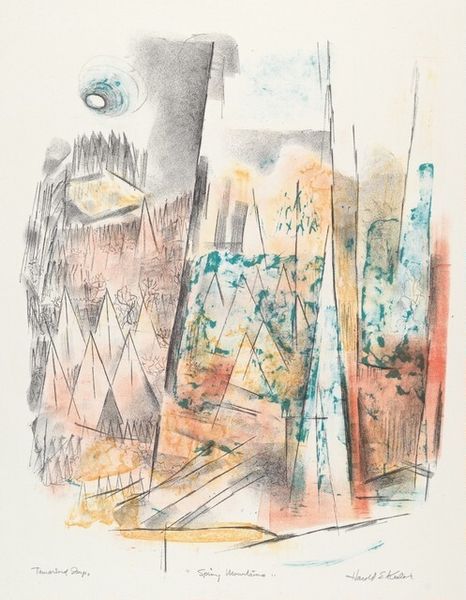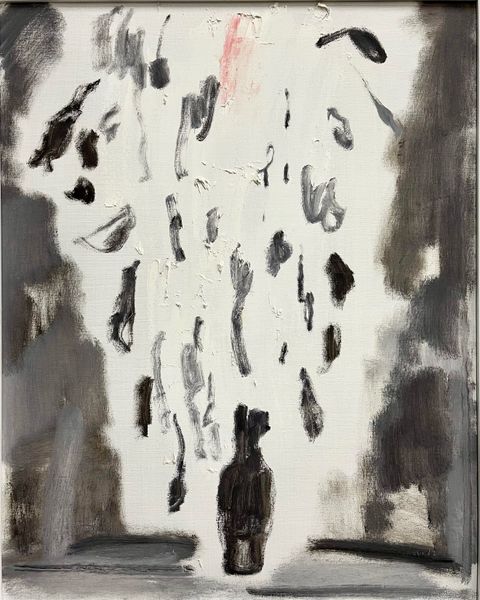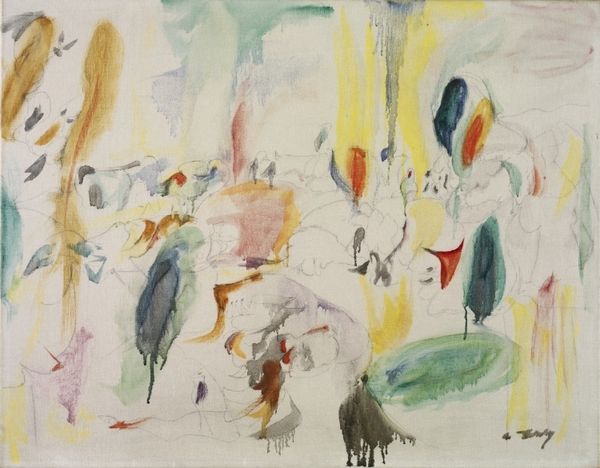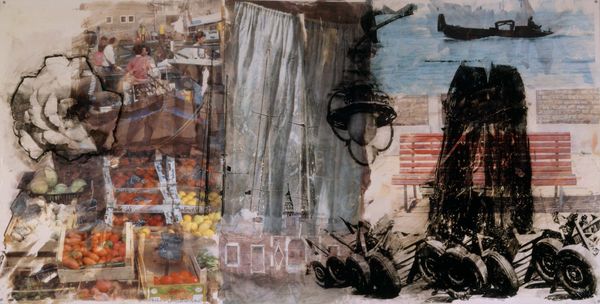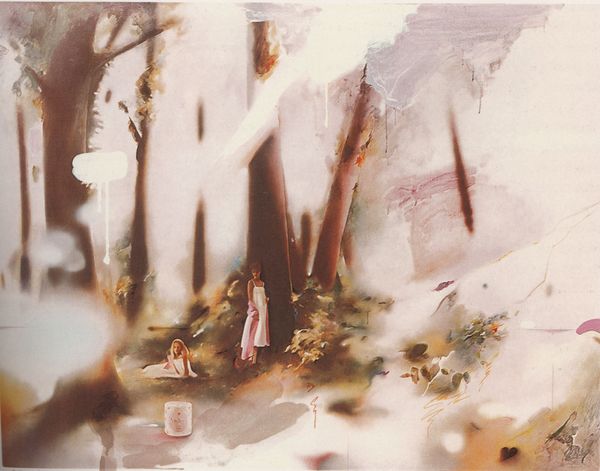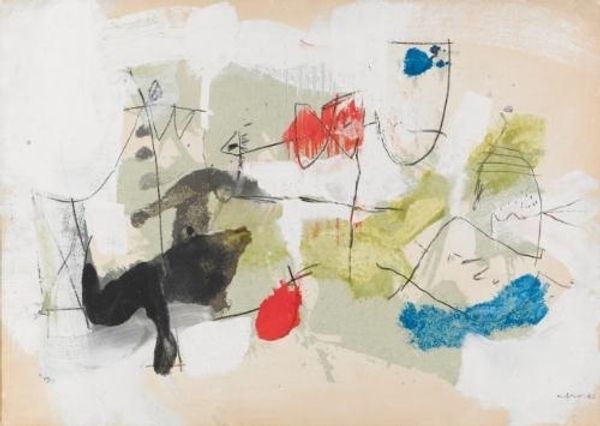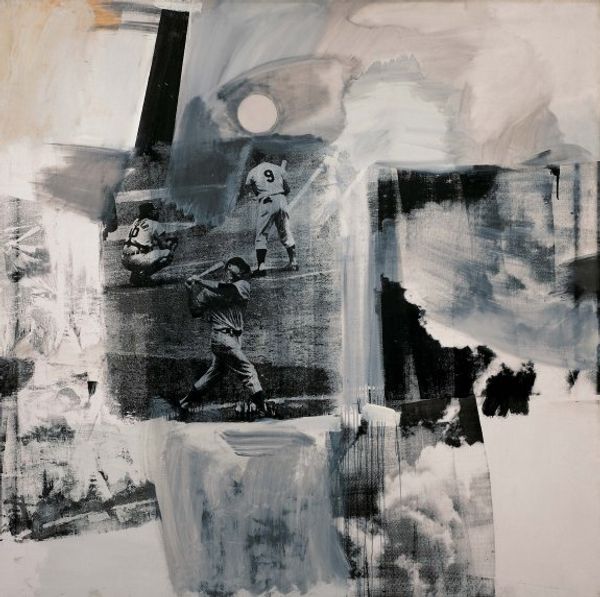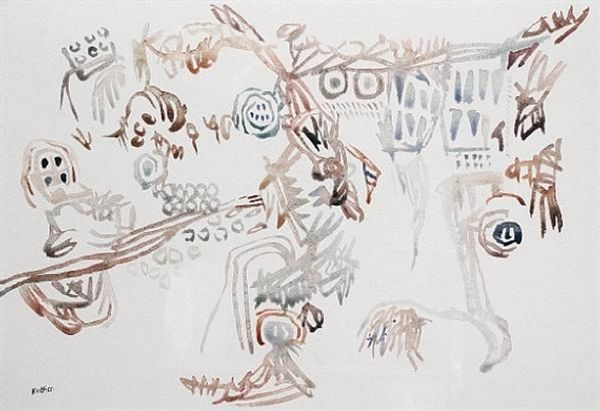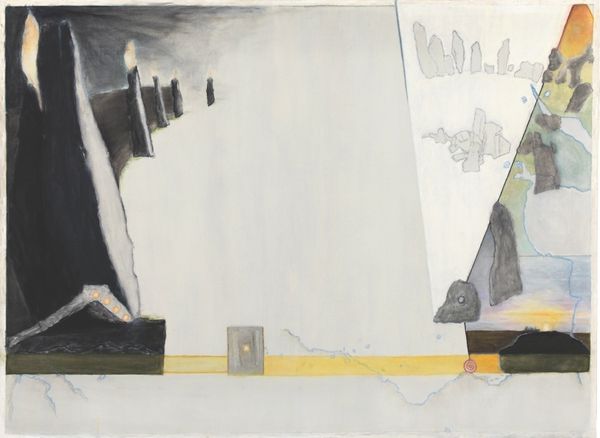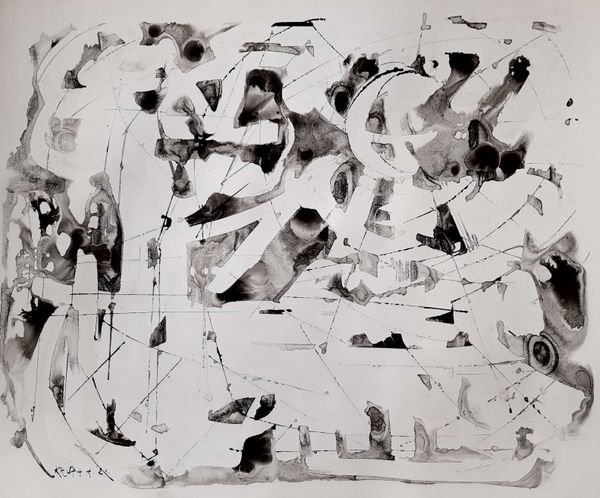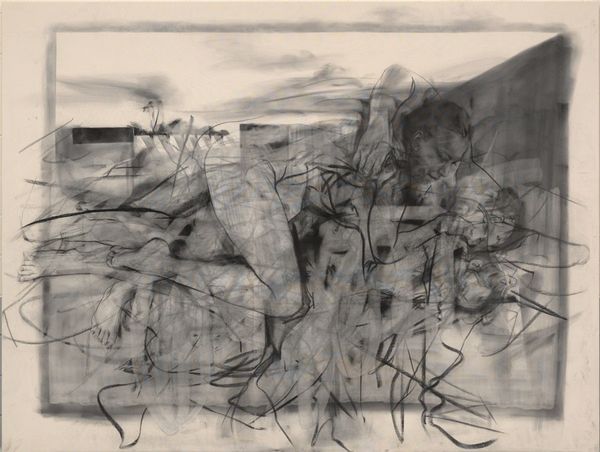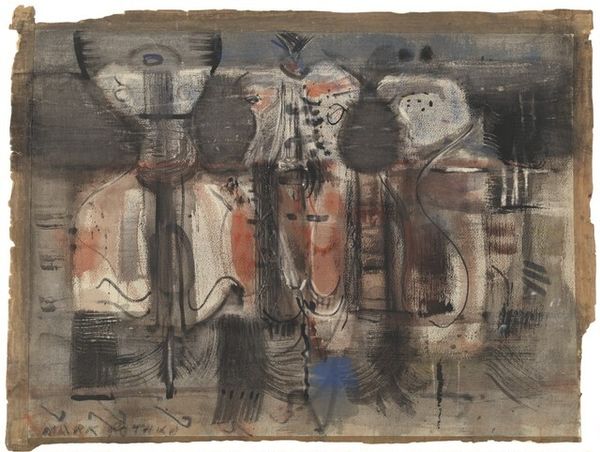
drawing, mixed-media, impasto, pastel
#
drawing
#
mixed-media
#
contemporary
#
impasto
#
pastel
#
mixed media
Dimensions: Overall: 58.4 x 77.5 cm (23 x 30 1/2 in.) framed (estimate): 76.2 x 101.6 cm (30 x 40 in.)
Copyright: National Gallery of Art: CC0 1.0
Editor: We’re looking at “Shellac Orientale” by Jim Dine, created between 1973 and 1974. It's a mixed media piece that seems to combine drawing and painting, maybe with collage? I'm immediately struck by the… layering. There’s a real sense of depth despite the flat surface. What do you see in this work? Curator: I'm drawn to the interplay of textures. Note the impasto effect created with pastels alongside the smoother areas of blended color. How do these contrasting textures affect your perception of the objects depicted? Editor: I hadn’t really thought about it like that. The rough texture makes those forms feel more present, almost tangible, compared to the other more faded images, which seem further away. Is that on purpose? Curator: Dine is known for incorporating everyday objects into his art. Notice the frequent depiction of tools—the saws, scissors—and their placement within the composition. How does the arrangement of these forms, their relationships to each other, guide your reading of the work? Editor: The tools do stand out. Maybe the arrangement feels a bit chaotic. Is that tension between order and chaos part of the point? Curator: The layering and juxtapositions can create a sense of visual tension. This may prompt you to seek connections between these seemingly disparate elements, ultimately influencing the way you see form and surface in contemporary mixed-media works. Editor: That's a cool idea, to seek the connections. Thank you. This reminds me to pay attention to how different elements on the surface can guide what I think of the underlying image. Curator: And considering texture is key! Thank you!
Comments
No comments
Be the first to comment and join the conversation on the ultimate creative platform.
